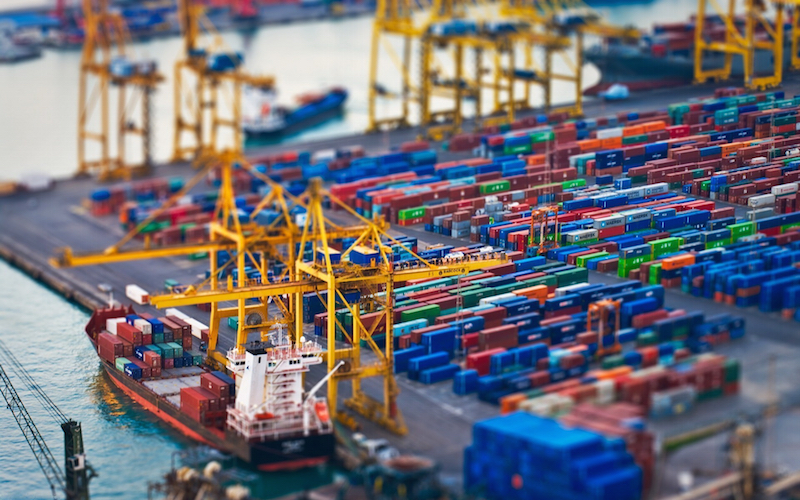
China’s East European Inroads
China’s economic and cultural input is being sought by Central and Eastern European countries.
The Belt & Road initiative, launched by China as a new Silk Road of the 21st century, the 16+1 project, will include 16 Central and East European Countries and China. The EU Strategy for the Danube Region may become the largest economic project ever. There are many conjunctions between the Belt & Road initiative and the EU Strategy for the Danube Region of which Romania was a founder.
During a workshop organized in Bucharest by the EURISC Foundation, a Romanian think tank, together with MEPEI Institute and ASPES Association, the main stakeholders interested in elevating the dialogue and cooperation between China and Central and East European countries followed up on the steps taken by the Romanian-Chinese cooperation within the structured frameworks of the 16+1 project and the Belt & Road initiative.
In 2013 Romania hosted the annual summit of the 16+ 1 initiative. In June 2015 the China EU summit took place in Brussels, and the mutual interests of the CEECs were reiterated during the economic and trade forum in Suhzou in November 2015. The document adopted in Suhzou in November 2015 provides one year guidelines and an ambitious discussion framework, and it lays a solid structure for the 1+16 regional cooperation.
China’s initiative to bring a new Silk Road to connect Europe and Asia will stimulate the 1+16 cooperation. The Danube, Black, Baltic and Adriatic Seas are avenues that can facilitate the rapid circulation of people, goods and services, bringing benefits to Central and Eastern Europe and beyond.
According to the European Commission, China and the EU have a daily exchange of goods of 1 billion euros.
CEECs needs to adjust this Silk Road concept to today’s realities in an all-encompassing vision because today’s globalized world is changing rapidly.
Ambassodor Xu Feihong, the Chinese ambassador in Bucharest, expressed pleasure that China has provided different ways to develop cooperation through the Belt & Road initiative: “Today’s world is undergoing changes and facing a global financial crisis and sluggish economies, so in order to cope with that, countries need regional cooperation at higher standards. China put forward the Belt & Road initiative by analyzing the challenges in today’s world and China’s new tasks, to enhance cooperation and promote common development. The Belt & Road involves about 2/3 of the world’s population and 30% of the global GDP, and aims at policy coordination, facilities and connectivity. It has concrete measures in investments, for instance, the first projects in infrastructure funded by the Silk Road Bank have been launched. International organizations have expressed interest in this initiative and over 30 countries have signed agreements with China.”
Ambassador Xu Feihong emphasized that “CEECs cooperation with China may provide favourable conditions. Since the 16+1 was set up, China’s cooperation with CEECs has matured. Transport routes will be widened; direct flights from Beijing to Budapest and Prague have been launched. Railway works will also start to connect the Baltic, Adriatic and Black Seas. In 2015, Chinese companies invested $40.8 billion in countries along the Belt & Road. The Belt & Road will bring prosperity to Asia and Europe. The 35th 5-year Chinese plan, adopted recently, stipulates the promotion of connectivity and people-to-people exchanges; also, investments of billions of USD overseas.”
To prove that the plan is as possible today as it was in the past, Ambassador Xu Feihong gave an overview of the new Chinese economy.
For potential skeptics who no longer believe in the Chinese economy, and “worry that the Chinese economy is heading for a hard landing” Ambassador Xu Feihong emphasized that “they may do so out of misunderstanding of the Chinese economy” and “that they should analyze it carefully because there are new data” – 13 million jobs have been created, consumption has grown, services account for 50.5% of the GDP, therefore the Chinese economy “has entered a new state, has shifted from the previous high speed growth, to medium-to-high-speed growth, it’s now focused on efficiency, incremental growth has been turned into fine-tuning and optimizing, while the driving force of growth has shifted from resource and low cost labour to innovation. This will allow the Chinese economy to become more sophisticated.”
The Chinese economy grew 6.9% in 2015, while the US grew by 2.4%, the Eurozone by 1.5% and Romania by 3.7%. China’s more than 6% growth represents a quarter of the world’s economy.
Eric Bartha, general secretary of the Council of Danube Cities and Regions and host of the workshop in the “Danube House,” the symbolic name of Ion Ghica Palace in Bucharest , believes that “we don’t need governments to work with our partners in education, economy, social” and reminded that “civilizations came along rivers: Yangtze, Danube, Volga, Mississippi…”
The Danube House in Bucharest will become the meeting point for the 16+1 Think Tanks Initiative and EU Strategy for the Danube Region.
EURISC Foundation from Romania has launched cooperation with CASS, the Chinese Academy for Social Sciences, CICIR – China Institute of Contemporary International Relations and intends to involve Think Tanks from the 16+1 countries in order to define specific economic measures and development projects between China and the Central and East European countries along the Belt & Road Initiative and the 16+1 cooperation initiative in conjunction with the EU Strategy for the Danube Region because the “global economy needs China” according to Liviu Muresan, president of the EURISC foundation.
